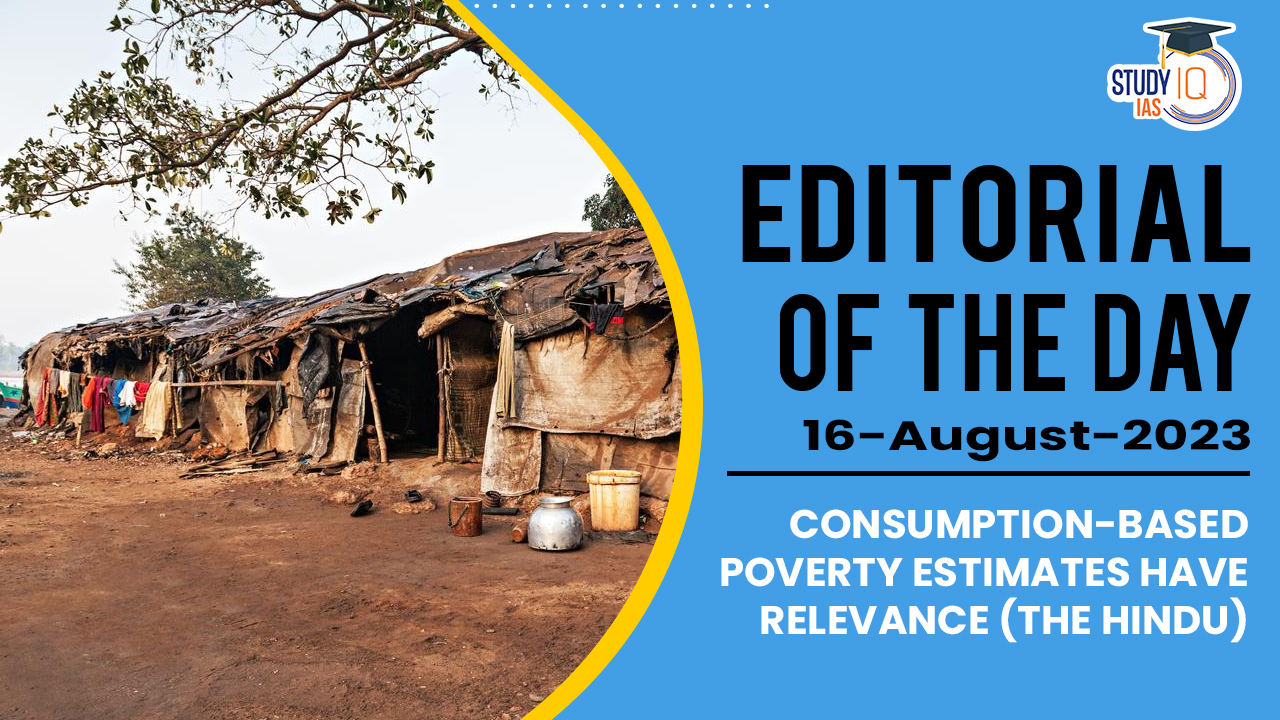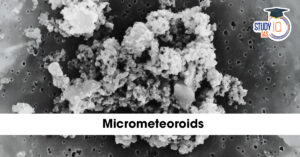Table of Contents
Context: The article is discussing two different approaches to measuring poverty: the multidimensional poverty index and consumption-based poverty estimates, specifically in the context of recent reports by NITI Aayog and the United Nations Development Programme (UNDP) on poverty reduction. The article is highlighting the importance of considering both approaches when analyzing poverty trends and formulating policy responses. It also suggests that policymakers should take into account various measures, including both multidimensional and consumption-based indicators, to get a more complete picture of poverty and its dynamics.
Background
India has registered a significant decline in the number of multidimensionally poor, according to the ‘National Multidimensional Poverty Index 2023’, released by the NITI Aayog.

‘National Multidimensional Poverty Index (MPI) 2023’
- The National MPI 2023 presents the second edition of the national MPI and is a follow-up to the Baseline Report published in November 2021.
- It provides multidimensional poverty estimates for India’s 36 States & Union Territories, along with 707 administrative districts across 12 indicators.
- These estimates have been computed using data from the 5th round of the NFHS (NFHS-5) conducted in 2019-21.
- This edition also presents the changes in multidimensional poverty between the survey periods of NFHS-4 (2015-16) and NFHS-5 (2019-21).
- Methodology: Like the global MPI, India’s national MPI has three equally weighted dimensions – Health, Education, and Standard of living – which are represented by 12 indicators.
- The global MPI Report is jointly published by the Oxford Poverty and Human Development Initiative (OPHI) and the United Nations Development Programme (UNDP).
- Aggregation of the Index: The indices of the national MPI comprise:
- Headcount ratio (H): It is the proportion of multidimensionally poor in the population, which is arrived at by dividing number of multidimensionally poor persons by total population.
- Intensity of poverty (A): It is the average proportion of deprivations which is experienced by multidimensionally poor individuals. To compute intensity, the weighted deprivation scores of all poor people are summed and then divided by the total number of poor people.
- Final calculation of MPI: MPI value is arrived at by multiplying the headcount ratio (H) and the intensity of poverty (A), reflecting both the share of people in poverty and the degree to which they are deprived.
Decoding the Editorial
The article is discussing the recent reports by NITI Aayog and the United Nations Development
Programme (UNDP) on poverty reduction.
- Multidimensional Poverty Index (MPI):
- This approach takes into account various dimensions of poverty beyond just income or consumption.
- It considers factors such as education, health, living standards, and more.
- The idea is to provide a more comprehensive view of poverty that reflects not only economic aspects but also social indicators.
- The MPI 2023 data show a significant reduction in the incidence of multidimensional poverty in India over a specific period.
- Consumption-Based Poverty Estimates:
- This method focuses primarily on income or consumption as a measure of poverty.
- It calculates the percentage of people living below a certain income or consumption threshold.
- The National Sample Survey (NSS) consumption-based poverty ratios fall under this category. These estimates have been traditionally used to gauge the extent of poverty in a country.
The article emphasises that while the multidimensional poverty index is a valuable tool that provides a broader understanding of poverty by considering various dimensions of well-being, it should not be considered a direct replacement for consumption-based poverty estimates. Consumption-based estimates still hold their relevance because they focus specifically on the economic aspect of poverty and provide a different perspective.
Comparison between the two methods:
This article discusses the comparison between different methods of measuring poverty.
- Comparison of Results:
- The article starts by comparing the findings of the Global MPI report from 2018, which praised India’s progress in reducing multidimensional poverty over a ten-year period.
- It acknowledges that similar progress had been reported in terms of poverty reduction using consumption-based measures between 2004-05 and 2011-12.
- Different Measurement Approaches:
-
- The article highlights that the search for non-income dimensions of poverty (such as education, health, sanitation, etc.) arises from the belief that some aspects of poverty might not be fully captured by income-based measures.
- These non-income dimensions are seen as “capabilities” that may not be directly linked to the consumption basket used for setting poverty lines.
- Challenges with Multidimensional Indicators: There is a concern about the use of multiple indicators in multidimensional poverty indices. The article mentions issues related to measurability, aggregation, and data availability for these indicators.
- Aggregation and Data Constraints: The article emphasizes that while indicators should ideally be independent, aggregation in a multidimensional index poses challenges.
- In principle, they should be independent.
- Access to safe drinking water, for example, cannot be aggregated with indicators such as child mortality.
- Even in respect of independent indicators, analytically appropriate rules of aggregation require that all of them relate to the same household.
- More generally, this requirement poses several data constraints.
- Role of Non-Income Indicators: The article acknowledges the importance of analyzing non-income indicators like education, health, sanitation, etc., alongside income or consumption poverty measures. However, it suggests that converting all these indicators into a single index can be problematic.
- Critique of Multidimensional Indices: There are criticisms of multidimensional indices, arguing that collapsing diverse dimensions into a single index with arbitrary weights might not accurately represent the complexity of poverty.
- Preference for Income or Consumption Measures: The article suggests that defining poverty in terms of income or consumption is the most appropriate method, as it is widely followed in most countries.
Need for Changes in the Survey:
The article discusses the need for changes in surveys, specifically focusing on consumption expenditure surveys, to improve the accuracy of poverty estimation and understanding the impact of public expenditure on health and education.
- Methodological Consistency for Comparison: To accurately compare poverty ratios over time, it’s important to follow a consistent method.
- Discrepancies in Consumption Estimates: There have been significant differences between consumption estimates derived from National Accounts Statistics (NAS) and those from the National Sample Survey (NSS) data. This discrepancy has been widening over time, which raises concerns about the accuracy and reliability of consumption data. There has to be ways to improve data collection through both NSS and NAS routes.
- Economic Context and Growth: Changes in the economic environment, such as shifts in growth rates and the impact of events like the COVID-19 pandemic, can influence poverty trends. Adjustments in survey methods are necessary to account for these changing conditions.
- Importance of Public Expenditure Impact: It is important to study the impact of public expenditure on health and education across different expenditure classes. This suggests a need to understand how government spending on these critical sectors affects poverty and well-being.


 Micrometeoroids: Tiny Space Particles, M...
Micrometeoroids: Tiny Space Particles, M...
 India Needs a National Insolvency Tribun...
India Needs a National Insolvency Tribun...
 Unlocking the Potential of India–Afric...
Unlocking the Potential of India–Afric...

























